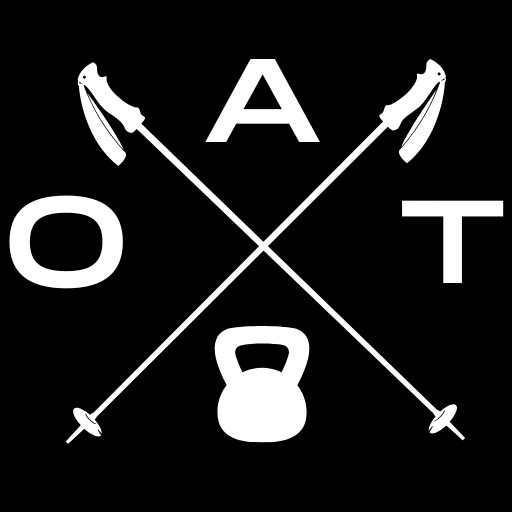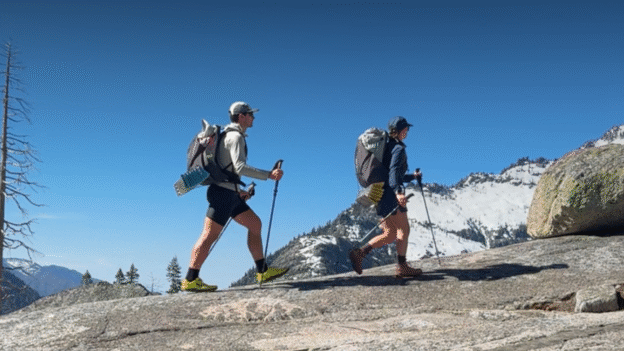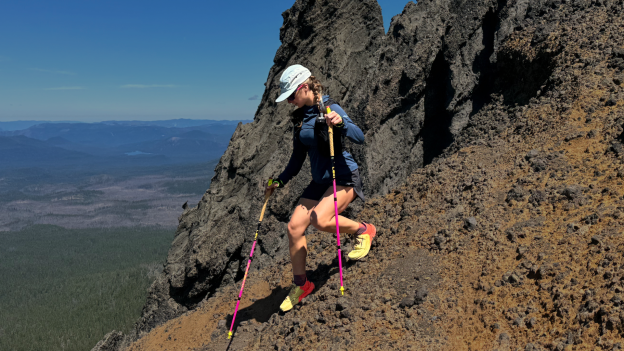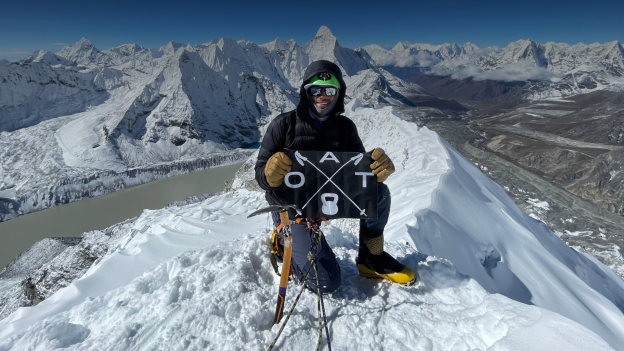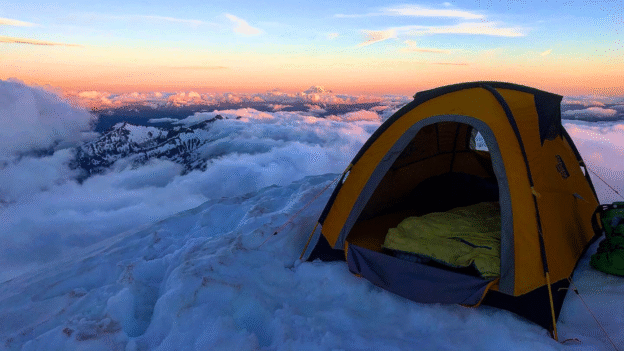Thielsen Thighs
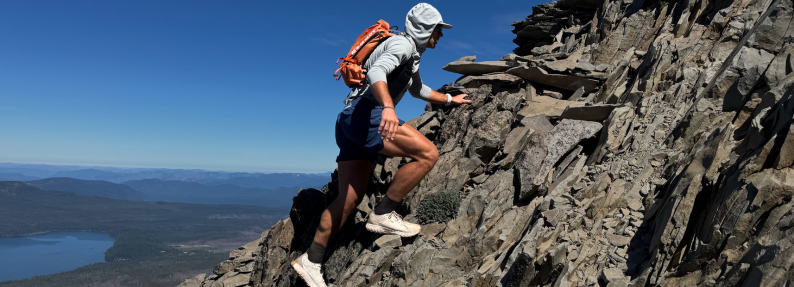
Thielsen Thighs
Translating Training to Terrain
At Outdoor Adventure Training, we’re all about sport-specific training—building strength, mobility, and durability that actually translates to performance and confidence in the mountains. But I didn’t arrive here by getting it all right.
Honestly, I got here by doing a lot of the wrong things first. I came up through high school sports, weightlifting, and explosive gym training. Then I became a personal trainer, helping people chase aesthetic goals and weight loss benchmarks. But as I started spending more time in the mountains, I realized that kind of fitness didn’t hold up where it really mattered. My body wasn’t ready for the terrain.
Nearly a decade later, we’ve dialed in a method that actually works—but it takes intention. You’ve got to bridge the gap between the work you do in the gym and how you move in the real world.
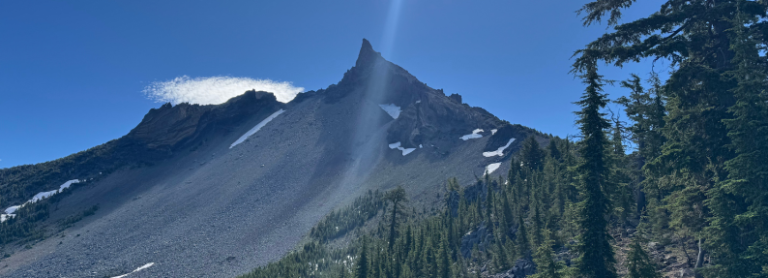
How We Train Matters
At first glance, Mount Thielsen doesn’t look massive—but it’s one of the most diverse day hikes in the Oregon Cascades. Nicknamed the “lightning rod of the Cascades,” the mountain has a bit of everything.
You begin in a burnt forest, winding through lodgepole and incense cedar, then settle into old-growth stands as the pitch steepens. After the PCT junction, the trail rapidly transitions into loose volcanic scree and sharp shale as you climb toward Chicken’s Roost. The grade becomes brutally steep—on the order of 15 % average grade, with sections topping 50°+.
Finally, the famous summit scramble awaits: 80 vertical feet of upper 4th to low 5th‑class climbing on exposed rock. One slip here is not just sketchy—it might be fatal. You need impeccable balance, upper‑body strength, and core control to move through it cleanly.
But for a 9.5‑mile, ~3,800‑foot day hike, Thielsen packs nearly every type of terrain—from fire‑scorched woods to scree to summit spire—that tests the whole body and keeps you honest. The payoff is sweeping Cascades panoramas: Mount Hood to the north, Mount Shasta to the south, and the only place outside Crater Lake National Park where you can actually see the lake on a clear day
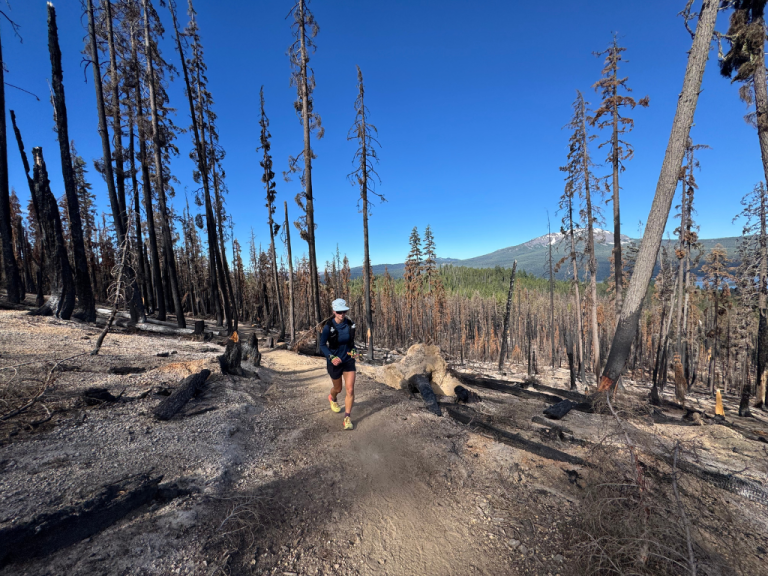
Calves do a lot of work on the trail!
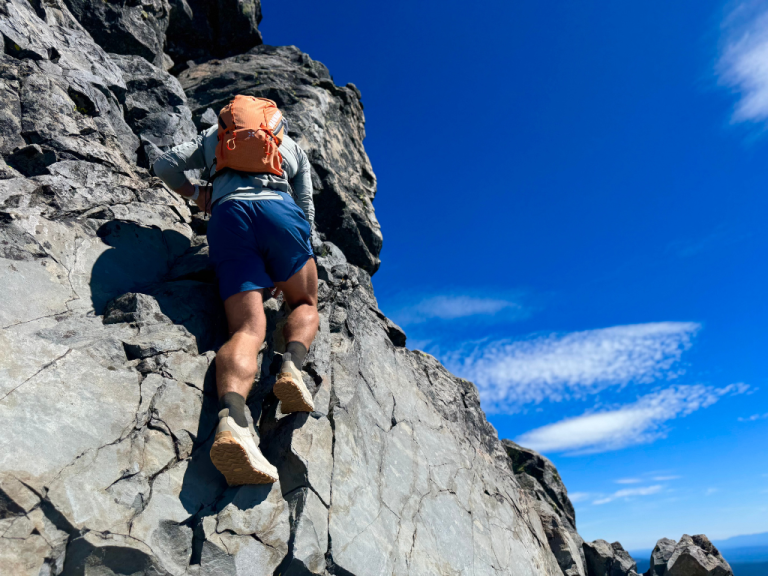
Active Half Splits to open up the calves and hamstrings
We Train For Confidence
But this blog isn’t really about Mount Thielsen. It’s about how we were able to move up and down that mountain efficiently—no slips, no stumbles, no rolled ankles or nagging knee pain. We felt strong, stable, and confident the entire way. That’s not luck. It’s training.
Most people get stuck doing the same exercises and the same workouts, week after week—usually in a single plane of motion. But the body doesn’t move that way in the mountains. On a route like Thielsen, you’re forced into awkward hip positions, deep knee flexion, ankle articulation in every direction—eversion, inversion—and you need to be able to generate power from those positions, not just survive them. Our training reflects that reality.
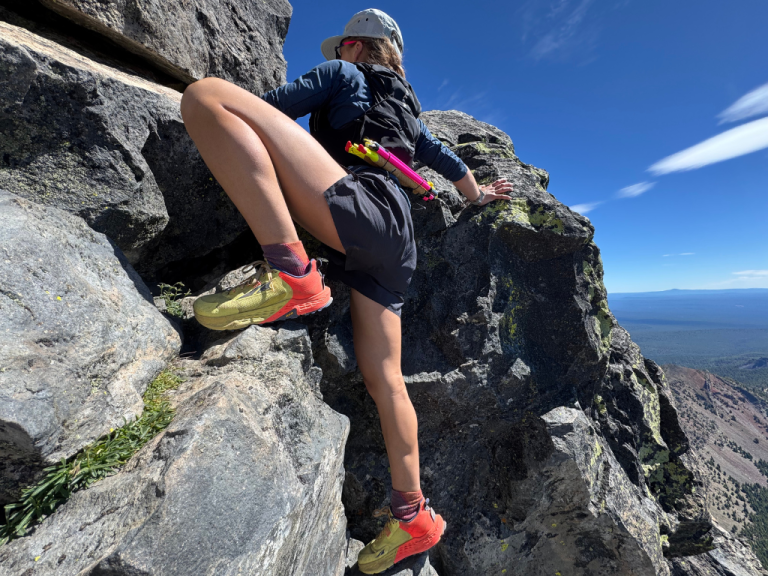
Emily showing off hip mobility on the summit pinnacle
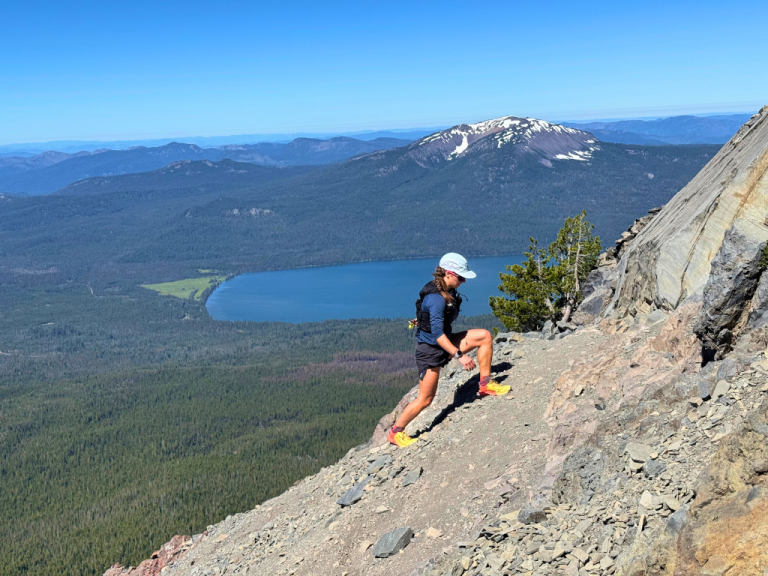
Emily chewing up vert at 8,000′
Make it Awkward
We intentionally train in awkward positions—because that’s exactly where the mountain puts you. Uneven trail, high steps, loose footing—your body has to respond without perfect alignment.
One of our go-to drills is 27 Squats, a sequence popularized by Dr. Kelly Starrett and The Ready State. It challenges your hips, knees, and ankles through a progression of internally rotated, externally rotated, and staggered stances: feet together, feet wide, feet offset—both sides. It’s not meant to look clean. It’s meant to expose limitations and force your body to find stability in less-than-ideal shapes.
These kinds of drills live at the intersection of mobility, control, and strength—the exact ingredients needed when you’re halfway up a ridgeline and can’t afford a misstep.

Mikey demoing the Dynamic Step Up exercise
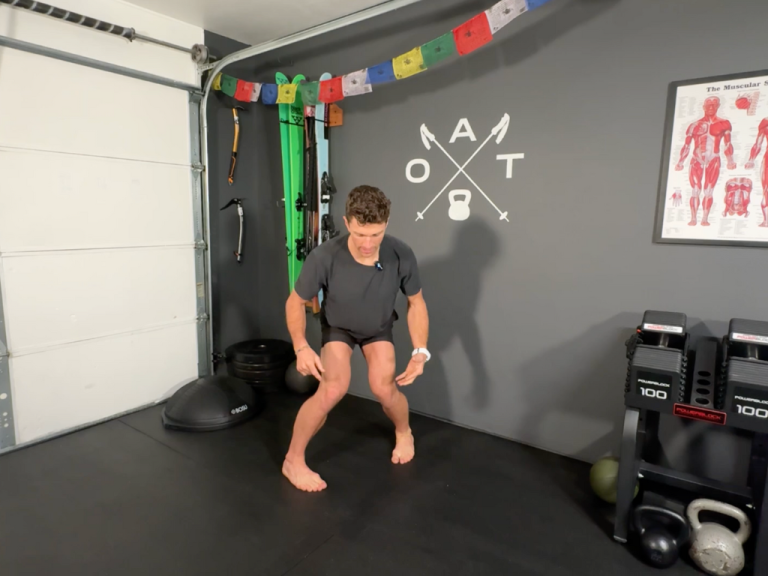
Mikey Demoing the 27 Squats Movement Control Drill
Building The RIght Strength
It’s not enough to be mobile and balanced—you’ve got to have the strength to keep going. On a climb like Thielsen, you’re gaining nearly 4,000 feet in less than five miles. That demands muscular endurance from your quads, glutes, hamstrings, and calves—all firing repeatedly under load.
We focus on high-rep, full-range movements like deep split squats and reverse step-ups to develop both anterior and posterior chain strength. These aren’t flashy lifts, but they build the capacity to move through steep terrain, step after step, without redlining.
When your legs are trained to handle that kind of volume and control, your descent is just as solid as your climb—and that’s where most people fall apart.
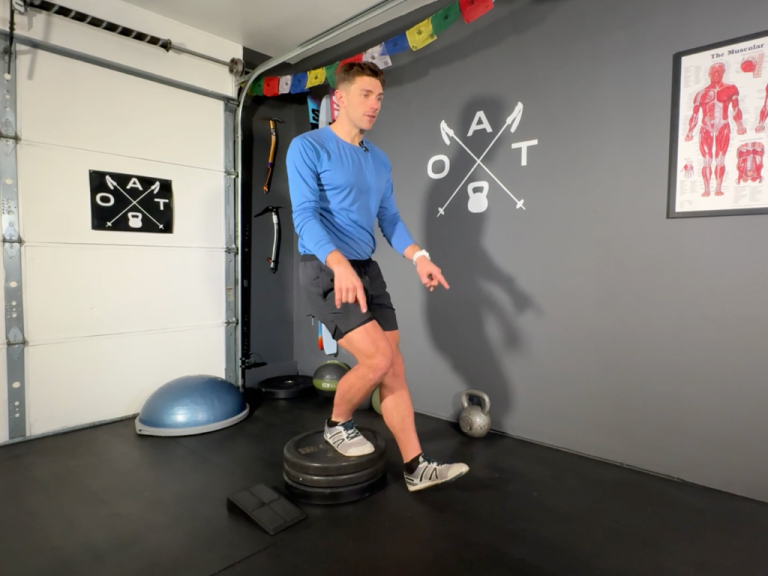
The Reverse Step Up is one of OAT’s staple exercises.
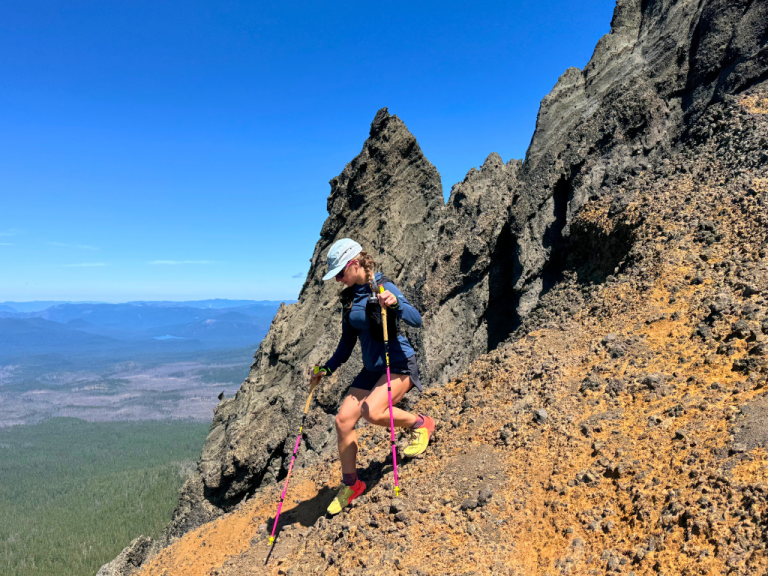
Emily reverse-stepping her way down volcanic rock
Final Thoughts
We know this was a quick breakdown—and honestly, we could write a whole book on how to train for real mountain movement (and maybe we will).
But if this climb showed us anything, it’s that when you train with intention, even a spicy scramble like Thielsen can feel smooth and steady. If you’re curious about how to build this kind of durability, or wondering if your current training is missing the mark, we’d love to hear from you.
Book a discovery call, shoot us a message, or explore the OAT Fit App. Whether you’re heading into your first summit push or your fiftieth, we’re here to help you move better, go farther, and feel stronger doing it.
Try A Workout
Find Your Program
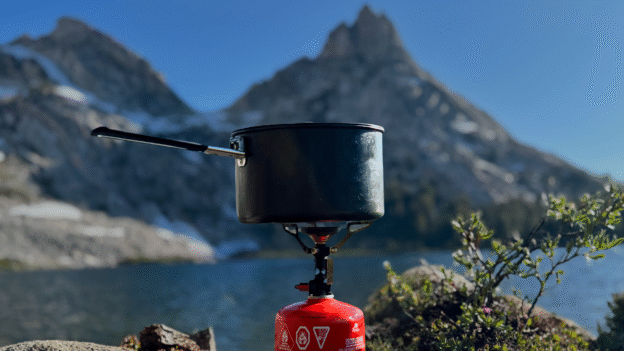
Nutrition Coaching
Performance nutrition for recovery, energy, and long-term outdoor longevity.
Learn MoreHave Questions?
We understand that starting a training program is a commitment you’re making, and we want to ensure that you get the most out of your experience with us. Ahead of registering for any of our programs, we’re available for a free 30-minute consultation to address any questions you may have.

